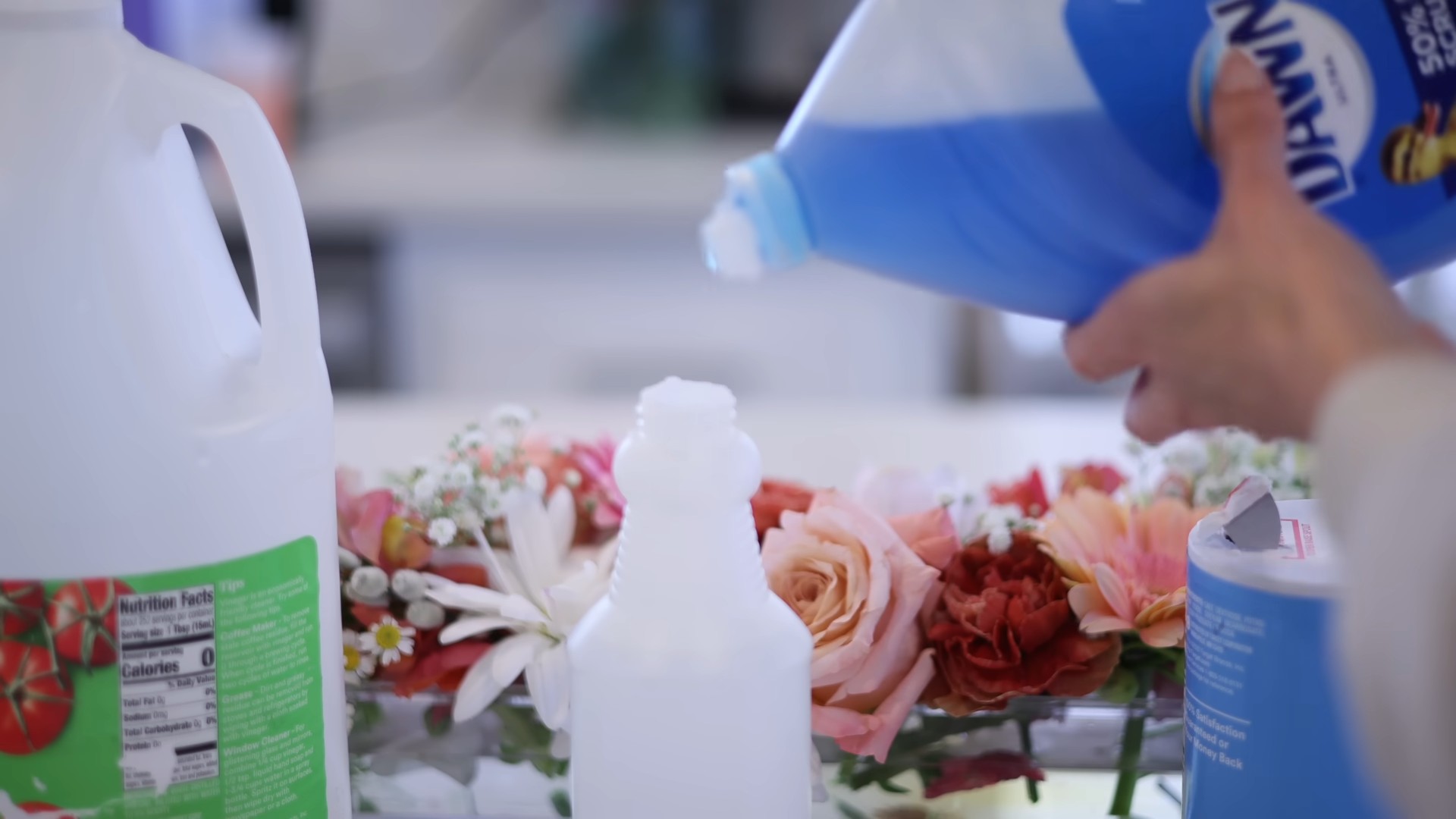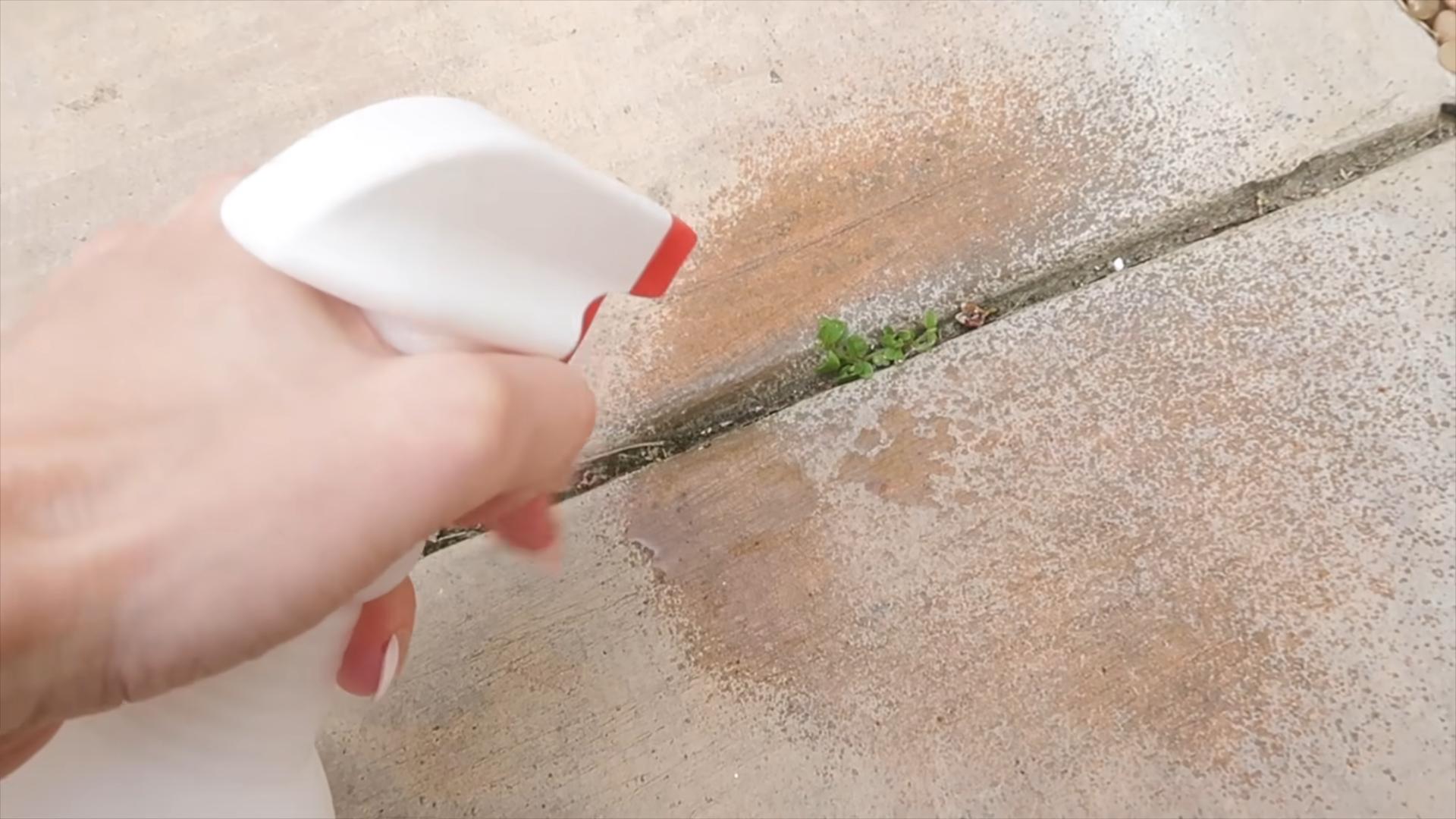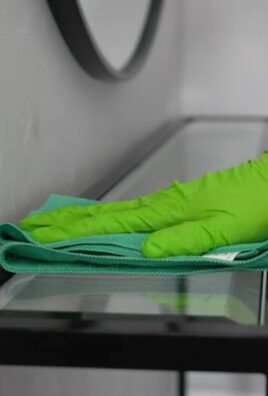Dish soap cleaning hacks – who knew these three little words could unlock a world of sparkling clean possibilities? I’m always on the lookout for simple, effective ways to tackle household chores, and let me tell you, I’ve stumbled upon some absolute gems using humble dish soap. Forget spending a fortune on specialized cleaners; you probably already have the solution sitting right next to your kitchen sink!
The history of soap itself stretches back millennia, with evidence suggesting its use in ancient Babylon. While the formulas have evolved significantly, the basic principle of breaking down grease and grime remains the same. But beyond washing dishes, this everyday essential boasts a surprising range of applications.
Why do you need these dish soap cleaning hacks in your life? Because let’s face it, cleaning can be a drag! But with these clever tricks, you can save time, money, and effort while achieving amazing results. From banishing stubborn stains to reviving tired plants, I’m excited to share my favorite dish soap secrets that will transform the way you clean. Get ready to be amazed by the power of this unassuming cleaning champion!

DIY Dish Soap Cleaning Hacks: Unleash the Power of Your Sink Savior!
Hey there, fellow cleaning enthusiasts! I’m about to let you in on a little secret: that bottle of dish soap sitting by your sink is a cleaning powerhouse just waiting to be unleashed. Forget expensive specialty cleaners – dish soap is surprisingly versatile and can tackle a whole host of messes around your home. I’ve compiled some of my favorite dish soap cleaning hacks that will save you money and keep your house sparkling. Let’s dive in!
General Guidelines for Dish Soap Cleaning
Before we get into the specifics, here are a few general tips to keep in mind:
* Dilution is Key: Dish soap is concentrated, so a little goes a long way. Always dilute it with water to avoid leaving a soapy residue.
* Test First: Before applying dish soap to a large area, test it on a small, inconspicuous spot to ensure it doesn’t damage or discolor the surface.
* Rinse Thoroughly: After cleaning with dish soap, rinse the area thoroughly with clean water to remove any remaining soap.
* Avoid Mixing with Bleach: Never mix dish soap with bleach, as this can create toxic fumes.
* Use Gentle Dish Soap: Opt for a gentle, pH-neutral dish soap to minimize the risk of damage to delicate surfaces.
Hack 1: Sparkling Clean Jewelry
Is your jewelry looking a little dull? Don’t spend a fortune on professional cleaning! Dish soap can bring back the sparkle.
Materials You’ll Need:
* Gentle dish soap
* Warm water
* Soft-bristled toothbrush (an old toothbrush works great!)
* Soft cloth
Step-by-Step Instructions:
1. Mix the Solution: In a small bowl, mix a few drops of dish soap with warm water. Don’t use hot water, as it can damage some gemstones.
2. Soak the Jewelry: Place your jewelry in the soapy water and let it soak for 10-15 minutes. This will help loosen any dirt and grime.
3. Gently Scrub: Use the soft-bristled toothbrush to gently scrub the jewelry, paying attention to any crevices or hard-to-reach areas. Be extra careful with delicate stones.
4. Rinse Thoroughly: Rinse the jewelry thoroughly under warm running water until all traces of soap are gone.
5. Dry and Polish: Pat the jewelry dry with a soft cloth. For extra shine, you can gently polish it with a jewelry polishing cloth.
Hack 2: Degreasing Kitchen Surfaces
Grease buildup in the kitchen is inevitable, but dish soap makes quick work of it.
Materials You’ll Need:
* Dish soap
* Warm water
* Spray bottle
* Sponge or microfiber cloth
Step-by-Step Instructions:
1. Prepare the Cleaning Solution: In a spray bottle, mix a tablespoon of dish soap with warm water. Shake gently to combine.
2. Spray the Greasy Surfaces: Spray the solution onto greasy surfaces, such as stovetops, range hoods, backsplashes, and countertops.
3. Let it Sit: Allow the solution to sit for a few minutes to loosen the grease. For stubborn grease, you may need to let it sit for longer.
4. Wipe Clean: Use a sponge or microfiber cloth to wipe away the grease and soap solution.
5. Rinse and Dry: Rinse the surfaces with clean water and dry with a clean cloth.
Hack 3: Cleaning Makeup Brushes
Dirty makeup brushes can harbor bacteria and lead to breakouts. Keep your brushes clean with this simple dish soap method.
Materials You’ll Need:
* Gentle dish soap
* Warm water
* Small bowl
* Clean towel
Step-by-Step Instructions:
1. Wet the Brushes: Wet the bristles of your makeup brushes with warm water. Avoid getting water on the handle, as this can loosen the glue that holds the bristles in place.
2. Add Soap: Place a drop or two of dish soap in the palm of your hand or in a small bowl.
3. Swirl and Lather: Gently swirl the brush bristles in the soap, creating a lather.
4. Rinse Thoroughly: Rinse the bristles under warm running water until all traces of soap are gone and the water runs clear.
5. Reshape and Dry: Gently squeeze out any excess water from the bristles and reshape them. Lay the brushes flat on a clean towel to dry. Avoid drying them upright, as this can cause water to seep into the handle and loosen the glue.
Hack 4: Removing Stains from Clothing
Dish soap can be surprisingly effective at removing certain types of stains from clothing, especially grease and oil-based stains.
Materials You’ll Need:
* Dish soap
* Warm water
* Soft cloth or sponge
Step-by-Step Instructions:
1. Act Fast: The sooner you treat the stain, the better your chances of removing it.
2. Blot the Stain: Blot the stain with a clean cloth or paper towel to remove any excess liquid. Avoid rubbing the stain, as this can spread it.
3. Apply Dish Soap: Apply a small amount of dish soap directly to the stain.
4. Gently Rub: Gently rub the dish soap into the stain with a soft cloth or sponge.
5. Let it Sit: Allow the dish soap to sit on the stain for 10-15 minutes.
6. Rinse Thoroughly: Rinse the area thoroughly with warm water.
7. Launder as Usual: Launder the garment as usual, following the care instructions on the label.
8. Check Before Drying: Before placing the garment in the dryer, check to make sure the stain is completely gone. If the stain is still visible, repeat the process.
Hack 5: Cleaning Windows and Mirrors
Achieve streak-free shine on your windows and mirrors with this simple dish soap solution.
Materials You’ll Need:
* Dish soap
* Warm water
* Spray bottle
* Microfiber cloth or squeegee
Step-by-Step Instructions:
1. Prepare the Cleaning Solution: In a spray bottle, mix a few drops of dish soap with warm water. Be careful not to use too much soap, as this can leave a residue.
2. Spray the Surface: Spray the solution onto the window or mirror.
3. Wipe Clean: Use a microfiber cloth or squeegee to wipe the surface clean. If using a squeegee, overlap each stroke slightly to avoid streaks.
4. Dry and Polish: Dry the surface with a clean, dry microfiber cloth to remove any remaining streaks.
Hack 6: Unclogging Drains
A clogged drain can be a major headache, but dish soap can sometimes help to dislodge the blockage.
Materials You’ll Need:
* Dish soap
* Boiling water
Step-by-Step Instructions:
1. Pour in Dish Soap: Pour about 1/4 cup of dish soap down the drain.
2. Follow with Boiling Water: Slowly pour a pot of boiling water down the drain.
3. Wait and See: Let the mixture sit for about 15-20 minutes.
4. Flush with Hot Water: Flush the drain with hot tap water for several minutes to see if the clog has cleared.
5. Repeat if Necessary: If the drain is still clogged, repeat the process. If the clog persists, you may need to try a different method, such as using a plunger or drain snake.
Hack 7: Cleaning Outdoor Furniture
Give your outdoor furniture a refresh with a simple dish soap solution.
Materials You’ll Need:
* Dish soap
* Warm water
* Bucket
* Sponge or scrub brush
* Garden hose
Step-by-Step Instructions:
1. Prepare the Cleaning Solution: In a bucket, mix a few tablespoons of dish soap with warm water.
2. Apply the Solution: Dip a sponge or scrub brush into the soapy water and apply it to the outdoor furniture.
3. Scrub Thoroughly: Scrub the furniture thoroughly to remove dirt, grime, and mildew.
4. Rinse with Water: Rinse the furniture with a garden hose to remove all traces of soap.
5. Allow to Dry: Allow the furniture to air dry completely before using it.
Hack 8: Cleaning Car Interiors
Dish soap can be used to clean various surfaces inside your car, from the dashboard to the upholstery.
Materials You’ll Need:
* Dish soap
* Warm water
*

Conclusion
So, there you have it! This simple yet incredibly effective dish soap cleaning hack is a game-changer for anyone looking to simplify their cleaning routine and achieve sparkling results without harsh chemicals or breaking the bank. We’ve explored how the degreasing power of dish soap, combined with a few readily available household ingredients, can tackle a multitude of cleaning challenges, from grimy ovens and stubborn stains to sparkling windows and refreshed furniture.
Why is this a must-try? Because it’s efficient, economical, and environmentally conscious. You’re likely already using dish soap daily, so you’re not adding another specialized cleaner to your overflowing cabinet. You’re also reducing your reliance on potentially harmful chemicals, creating a healthier home environment for yourself and your family. Plus, the sheer versatility of this cleaning hack means you can ditch several single-purpose cleaners and streamline your cleaning arsenal.
But don’t stop there! Feel free to experiment and adapt these methods to suit your specific needs and preferences. For instance, if you’re dealing with particularly stubborn grease in the oven, try adding a paste of baking soda and dish soap, letting it sit overnight, and then scrubbing it away. For a refreshing scent boost, add a few drops of your favorite essential oil to your dish soap solution – lavender for calming, lemon for invigorating, or tea tree for its antibacterial properties. If you’re cleaning delicate surfaces, always test the solution in an inconspicuous area first to ensure it doesn’t cause any damage or discoloration. You can also try using different types of dish soap – some people swear by specific brands for their cleaning power or gentleness.
We’re confident that once you try this dish soap cleaning hack, you’ll be amazed by the results. It’s a simple, effective, and affordable way to keep your home clean and fresh. So, go ahead, give it a try! We encourage you to experiment with different variations and find what works best for you.
And most importantly, we want to hear about your experience! Share your before-and-after photos, your favorite variations, and any tips or tricks you discover along the way in the comments section below. Let’s build a community of clean-home enthusiasts and share the joy of a sparkling clean home, achieved with the power of simple dish soap. Your insights could help others discover the magic of this versatile cleaning solution and transform their cleaning routines for the better. Let us know how this dish soap cleaning hack worked for you!
Frequently Asked Questions (FAQ)
Is dish soap safe to use on all surfaces?
While dish soap is generally considered safe for most surfaces, it’s always best to test it in an inconspicuous area first, especially on delicate materials like wood, painted surfaces, or natural stone. Some dish soaps may contain ingredients that could potentially damage or discolor certain surfaces. A diluted solution is usually safer than using concentrated dish soap directly. For example, when cleaning wood furniture, use a very mild solution of dish soap and water, and always wipe the surface dry immediately after cleaning to prevent water damage. If you’re unsure, consult the manufacturer’s instructions for the specific surface you’re cleaning.
What type of dish soap is best for cleaning?
The best type of dish soap for cleaning depends on the specific task. For general cleaning, any standard dish soap will work well. However, for tougher jobs like degreasing ovens or removing stubborn stains, a dish soap specifically formulated for grease-cutting may be more effective. Consider using a plant-based or eco-friendly dish soap if you’re concerned about the environmental impact of harsh chemicals. Some people also prefer using clear dish soap to avoid any potential staining from colored dyes. Ultimately, the best dish soap is the one that works best for you and your cleaning needs.
Can I use dish soap to clean my car?
While dish soap can be used to clean your car in a pinch, it’s not recommended for regular use. Dish soap is designed to cut through grease and food particles, which means it can also strip away the wax and protective coatings on your car’s paint. This can leave your car vulnerable to scratches, oxidation, and fading. If you do use dish soap to clean your car, make sure to use a very diluted solution and rinse thoroughly. It’s always best to use a car wash soap specifically formulated to protect your car’s paint.
How do I prevent streaks when cleaning windows with dish soap?
Streaks are a common problem when cleaning windows with dish soap. To prevent streaks, use a very small amount of dish soap in your cleaning solution – a few drops per gallon of water is usually sufficient. Use a clean microfiber cloth or squeegee to wipe the windows, and dry them immediately with another clean, dry cloth. Avoid cleaning windows in direct sunlight, as this can cause the cleaning solution to dry too quickly and leave streaks. You can also add a small amount of white vinegar to your cleaning solution to help prevent streaks.
Is dish soap effective for removing stains from clothing?
Yes, dish soap can be an effective stain remover for clothing, especially for grease-based stains. Apply a small amount of dish soap directly to the stain and gently rub it in. Let it sit for a few minutes, then rinse with warm water. Wash the garment as usual. However, it’s important to test the dish soap on an inconspicuous area of the fabric first to ensure it doesn’t cause any discoloration. Avoid using dish soap on delicate fabrics like silk or wool. For tougher stains, you may need to repeat the process or try a different stain remover.
Can I use dish soap to clean my bathroom?
Yes, dish soap can be used to clean various surfaces in your bathroom, including sinks, countertops, and showers. Its degreasing properties make it effective for removing soap scum and grime. However, avoid using dish soap on natural stone surfaces like marble or granite, as it can damage the sealant. For cleaning toilets, you can add a small amount of dish soap to the bowl and let it sit for a few minutes before scrubbing. Always rinse thoroughly after cleaning with dish soap to remove any residue.
How can I make a natural cleaning solution with dish soap?
Creating a natural cleaning solution with dish soap is easy. Combine a few drops of dish soap with water in a spray bottle. You can also add other natural ingredients like white vinegar, lemon juice, or essential oils to boost the cleaning power and add a pleasant scent. For example, a solution of dish soap, water, and white vinegar is great for cleaning windows and mirrors. A solution of dish soap, water, and lemon juice is effective for cleaning kitchen surfaces. Experiment with different combinations to find what works best for you.
What are some other uses for dish soap besides cleaning?
Dish soap has many uses beyond cleaning. It can be used as a degreaser for tools and equipment, a bubble solution for kids, a weed killer for your garden (use with caution, as it can also harm desirable plants), and even as a lubricant for stuck zippers or drawers. Its gentle formula makes it a versatile household product with a wide range of applications. Just remember to use it sparingly and always test it in an inconspicuous area first to ensure it doesn’t cause any damage.




Leave a Comment